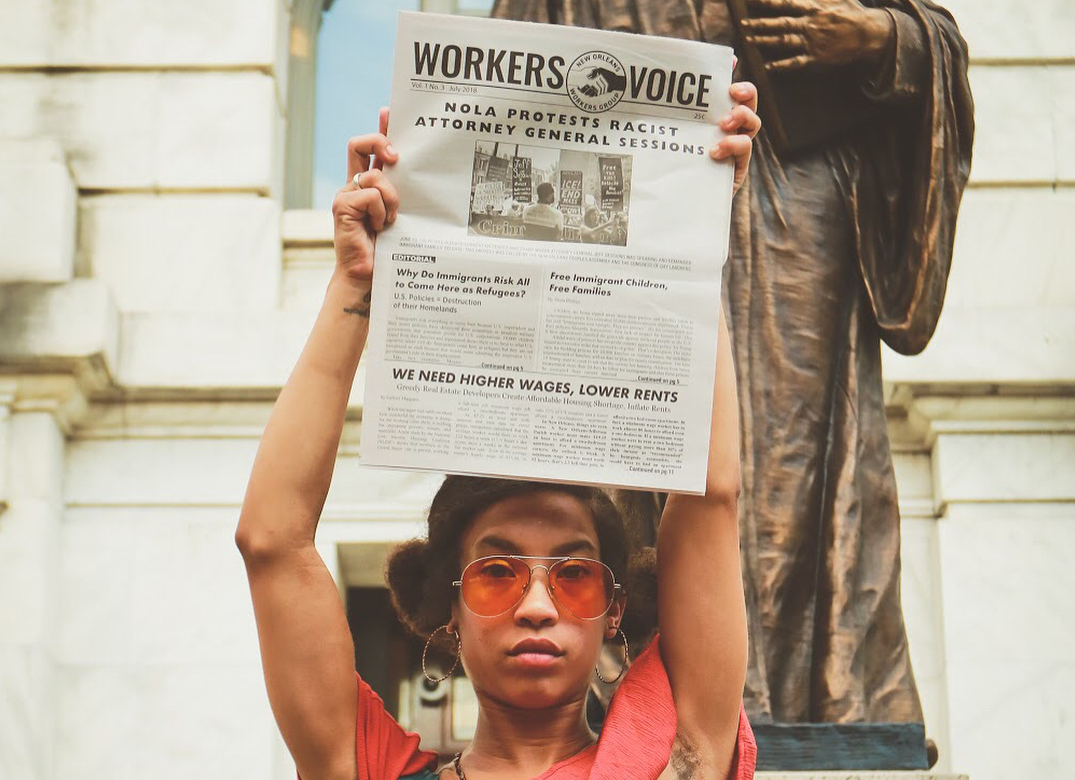By Malcolm Suber
“The BPP members made sacrifices for our collective liberation that can never be repaid short of the overthrowing the capitalist ruling class and ushering in the rule of the working class.”
The year 1968 was a high point of the Black Liberation struggle in the USA. The oppressed Black masses had decidedly turned away from the non-violent, assimilationist civil rights movement. The passage of the civil rights bill in 1964 and the voting rights bill of 1965 had to some extent marked the end of civil rights demands. The Black masses were seeking an end to government and extra-governmental oppression characterized by constant police terror. They also wanted better living and working conditions and a brighter future for their children. Especially in the northern, mid-western and west coast ghettos the Black masses were seeking a new vision of what genuine liberation would look like. Desegregation would not satisfy their thirst for genuine freedom and self-determination.
The Black Liberation Movement (BLM) in the early 1960s had been about organizing and mobilizing the masses of Black people and their allies to demand political and social equality for Black people, especially in the apartheid-like conditions of the South. The 1960’s were also the era of the anti-imperialist national liberation movements by the peoples of Asia, Africa and Latin America. Countless people were moved to become part of this worldwide fightback. Many of them embraced the clarion call for revolution!
By 1963, the Black masses in the ghettos of US cities began to explode in righteous indignation to the wretched conditions that existed in their neighborhoods. They began to see clearly that the white capitalist ruled USA was not going to own up to its racism and discrimination and voluntarily change these conditions. It would take the resistance of the Black people themselves to force the ruling class to improve their conditions.
The civil rights leaders of the NAACP, the SCLC and CORE had rallied people around the slogan- “free by 63”. They told the masses that it was possible that the formal political and social equality of Black people could be accomplished by 1963, the hundredth anniversary of Abraham Lincoln’s Emancipation Proclamation. This was part of the energy that produced the August 1963 March on Washington.
Stepping into the political landscape of the early 1960s were the Black Muslims whose chief spokesman, Malcolm X, challenged the civil rights movement as being too assimilationist and not having tactics that would mobilize the Black working-class masses in the ghettos of America. Malcolm X and other Black nationalists lambasted “non-violence” as a brake on the BLM and instead advocated identifying with national liberation movements that were taking up armed struggle for their freedom.
By 1965 “Black Power” had eclipsed “we shall overcome” as the slogan that captivated the imagination of revolutionary minded freedom fighters.
Stepping into this rapidly developing BLM, the Black Panther Party for Self-Defense was founded by Bobby Seal and Huey P. Newton in Oakland, CA in October 1966. They began a campaign of arming themselves and monitoring police activity. They relied on California laws that allowed open carry of weapons. They openly confronted police who were brutalizing Black residents. They modeled themselves after the armed self-defense of Black communities in the South that had been led by Robert Williams in North Carolina and the Deacons for Defense in Louisiana.
The BPP became a fixture in everyone’s consciousness after they marched into the California state capitol bearing arms in 1967. This action shocked the white capitalist government and brought pride to the oppressed Black masses. Finally, an organization was emerging that would stand up to capitalist Amerikkka and organize the Black masses for revolution.
The BPP grew rapidly and had chapters all across the USA. They openly declared themselves to be revolutionary nationalists and elaborated their aims in the famous 10-point program. The BPP characterized itself as an armed propaganda unit spreading revolution in the USA. They took an anti-imperialist stance in support of the national liberation struggles, especially in support of the National Liberation Front in Vietnam.
The BPP created a weekly newspaper that was widely circulated all over the USA. The BPP paper captured the mood of the Black masses. Of special universal interest were the powerful cartoons drawn by Emery Douglas that graphically portrayed the fight for liberation and the oppression of the pigs (the police).
The BPP grew swiftly and soon attracted the ire of J. Edgar Hoover and the FBI. Hoover declared the BPP as the greatest threat to domestic tranquility. All police forces, from the federal to the local level were ordered to harass and eliminate the BPP. Many BPP members were assassinated and many others arrested.
Government repression and the heavy infiltration of agent provocateurs ultimately caused the demise of the BPP as chapters pursued their own agenda. Whatever the shortcomings of the BPP, it was founded as a revolutionary organization and inspired the BLM. The BPP members made sacrifices for our collective liberation that can never be repaid short of overthrowing the capitalist ruling class and ushering in the rule of the working class.
